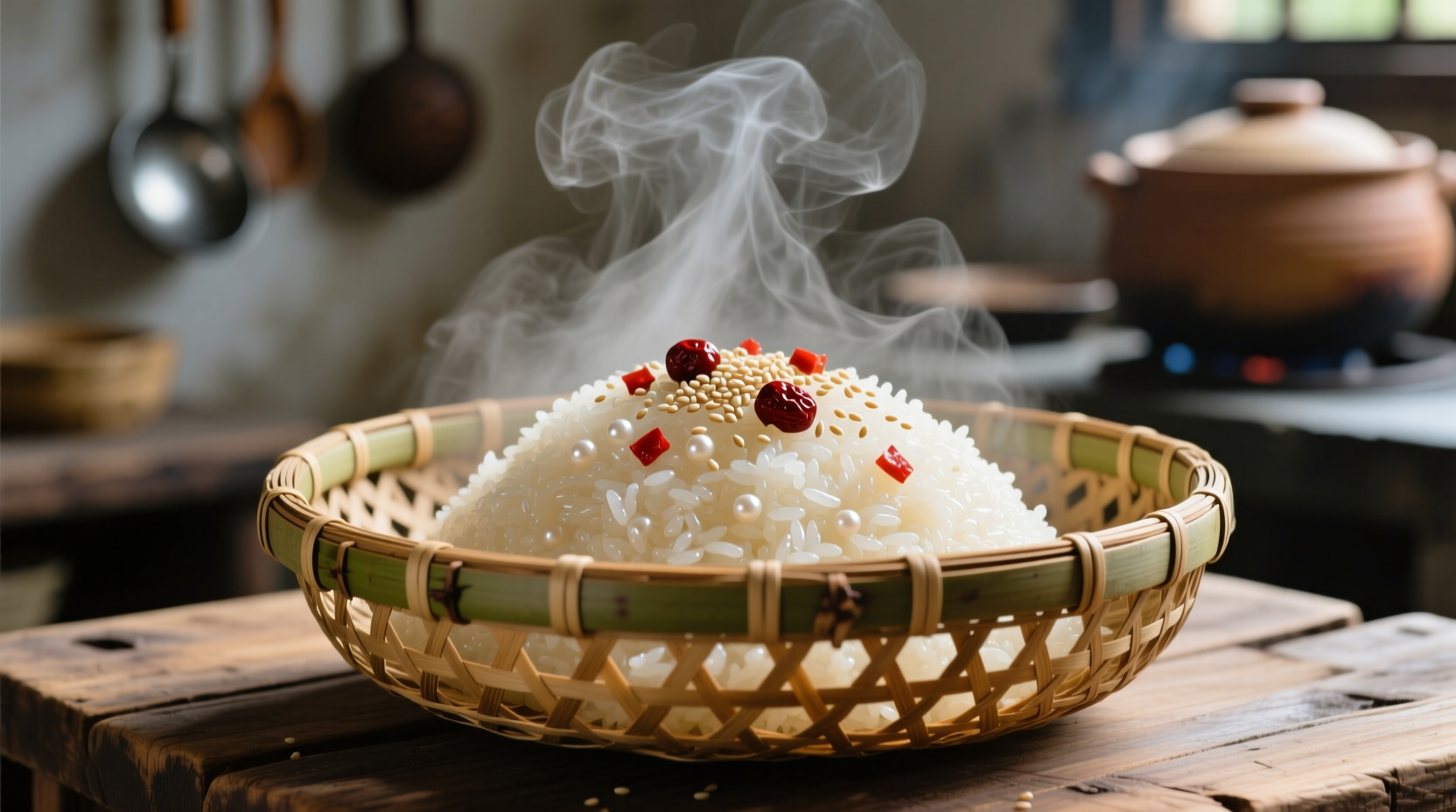Glutinous rice, also known as sticky rice or sweet rice, forms the foundation of countless Asian dishes from Chinese zongzi to Thai mango sticky rice. Despite its name, this rice contains no gluten—it gets its distinctive sticky texture from high amylopectin starch content. Many home cooks struggle with this specialty grain, ending up with either chalky, undercooked rice or a gummy, overcooked mess. The solution lies in understanding that glutinous rice requires fundamentally different preparation than regular rice.
Why Traditional Boiling Methods Fail
Unlike regular rice varieties that absorb cooking water, glutinous rice needs steaming after thorough soaking. Attempting to boil it like regular rice causes the grains to rupture, releasing too much starch and creating an unpleasantly dense texture. This critical distinction explains why so many first-time attempts fail.
| Cooking Method | Soaking Time | Cooking Time | Best For |
|---|---|---|---|
| Traditional Steamer | 4-12 hours | 20-25 minutes | Festival dishes, zongzi |
| Rice Cooker | 6-8 hours | "White Rice" setting | Everyday sticky rice |
| Instant Pot | 2 hours minimum | Manual 8-10 PSI, 8 minutes | Quick preparation |
Preparation: The Soaking Phase
Proper soaking hydrates the grains without breaking down their structure. Use room temperature water in a 2:1 ratio (water to rice). The minimum soaking time is 4 hours, but 8-12 hours produces superior results. During this phase, the rice should double in volume and become opaque white. Change the water once if soaking longer than 8 hours to prevent fermentation.
"Many Western cooks skip or shorten the soaking time, which is the primary reason for failed results," explains Chef Liu Wei, a specialist in Chinese regional cuisines. "The starch needs this extended hydration period to achieve that signature chew without becoming gummy." 
Traditional Steaming Method
After soaking, drain the rice thoroughly in a fine-mesh strainer for 15 minutes. Line your steamer basket with cheesecloth or banana leaves (which add subtle flavor). Spread the rice in an even layer no more than 1 inch deep.
Bring water to a rolling boil in your steamer base, then add the rice. Steam covered for 20-25 minutes. Halfway through, gently flip the top layer of rice to ensure even cooking. The rice is done when grains turn translucent and feel tender but still slightly chewy when tasted.
Troubleshooting Common Issues
Problem: Rice remains chalky and hard
Solution: Insufficient soaking time. Always soak at least 4 hours, preferably overnight.
Problem: Rice is overly sticky and clumpy
Solution: Over-soaking or improper steaming. Never soak longer than 12 hours, and ensure proper drainage before steaming.
Problem: Uneven texture (some grains cooked, others hard)
Solution: Inconsistent water temperature during steaming. Maintain a vigorous, steady boil throughout cooking.
Cultural Context and Usage
Glutinous rice preparation has evolved over centuries across Asia. Traditional methods involved soaking rice in bamboo tubes before roasting over open flames. Modern electric rice cookers have simplified the process, but the fundamental soaking-steaming principle remains unchanged. In Southeast Asia, sticky rice is often served in woven bamboo containers called kratip, while in China it's commonly shaped into cylinders for festival foods.
According to USDA food safety guidelines, cooked glutinous rice should be consumed within 2 hours at room temperature or refrigerated promptly. Reheat by steaming for best texture retention—microwaving often creates uneven results.
Serving and Storage Tips
For optimal texture, let cooked glutinous rice rest for 5 minutes after steaming. Traditional serving involves shaping it into small cylinders or balls using damp hands. When storing leftovers, keep in an airtight container in the refrigerator for up to 3 days. To reheat, add 1-2 tablespoons of water per cup of rice and steam for 5-7 minutes.
Perfecting Your Technique
Mastering glutinous rice requires attention to three critical factors: soaking duration, drainage quality, and consistent steaming temperature. The ideal cooked grain should be tender yet retain a distinct chewy texture, with grains sticking together but remaining individually discernible. With practice, you'll develop the visual and tactile cues that indicate perfect doneness—translucent appearance, uniform texture throughout, and that distinctive sweet, nutty aroma.
Can I cook glutinous rice without soaking it?
No, soaking is essential for proper texture. Skipping this step results in hard, undercooked grains. The minimum soaking time is 4 hours, though 8-12 hours produces superior results with fully hydrated, evenly cooked rice.
Why is my glutinous rice not sticky enough?
Insufficient soaking time is the most common cause. Glutinous rice requires 4-12 hours of soaking to properly hydrate the starches. Using too much water during cooking or improper steaming technique can also affect stickiness.
What's the difference between glutinous rice and regular rice?
Glutinous rice has higher amylopectin starch content (nearly 100%) compared to regular rice (about 80%). Despite its name, it contains no gluten. This starch composition gives it the distinctive sticky, chewy texture when properly prepared through soaking and steaming.
Can I use a rice cooker for glutinous rice?
Yes, but with modifications. Soak rice for 6-8 hours, then use the "white rice" setting with slightly less water than usual. For best results, switch to the "keep warm" setting for 10-15 minutes after cooking completes to allow final moisture absorption.











 浙公网安备
33010002000092号
浙公网安备
33010002000092号 浙B2-20120091-4
浙B2-20120091-4